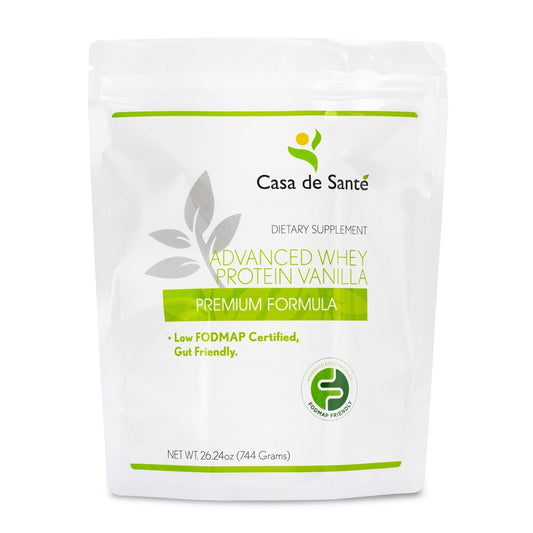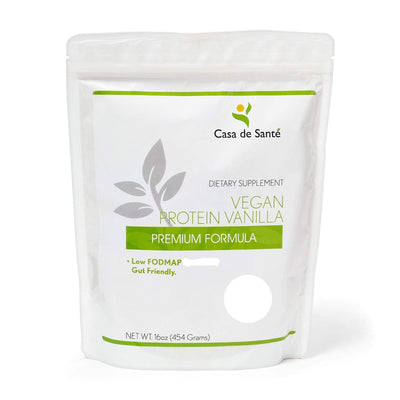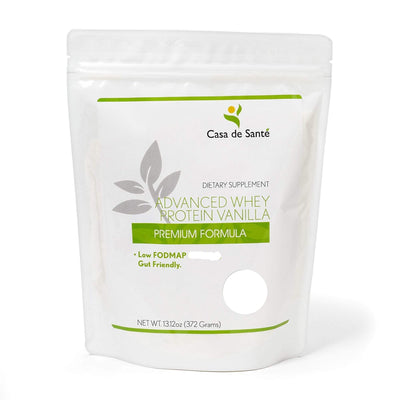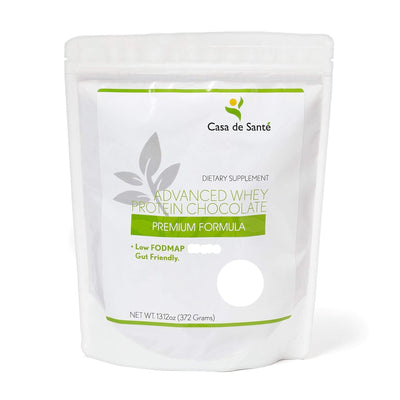IgE Food Antibodies by Genova Diagnostics Vs Activated Cell Test
IgE Food Antibodies by Genova Diagnostics Vs Activated Cell Test
In the world of food allergies and sensitivities, finding the root cause of adverse reactions can be a challenging and complex process. This is where diagnostic tests like the IgE Food Antibodies Test by Genova Diagnostics and the Activated Cell Test come into play. Both tests aim to uncover the triggers behind food-related symptoms, but they utilize different approaches and have their own unique benefits. In this article, we will explore these diagnostic tests in detail, comparing their methodologies, reliability, cost, and real-life experiences of patients who have undergone them.
Understanding Food Allergies and Sensitivities
Before delving into the specifics of the diagnostic tests, it is essential to have a clear understanding of food allergies and sensitivities. Food allergies are immune-mediated responses to specific proteins present in certain foods. These reactions are triggered by the production of immunoglobulin E (IgE) antibodies when the immune system recognizes a harmless substance as harmful. This IgE-mediated immune response can lead to a range of symptoms, from mild discomfort to severe anaphylaxis.
Food allergies can manifest in various ways, depending on the individual. Some common symptoms include hives, itching, swelling, abdominal pain, diarrhea, nausea, and vomiting. In severe cases, anaphylaxis can occur, which is a life-threatening allergic reaction that requires immediate medical attention. Anaphylaxis symptoms may include difficulty breathing, a drop in blood pressure, rapid pulse, and loss of consciousness.
The Role of IgE in Food Allergies
IgE antibodies play a central role in immediate hypersensitivity reactions to food allergens. When an individual with a food allergy consumes a triggering food, the body releases IgE antibodies, which bind to specific cells called mast cells. This binding triggers the mast cells to release chemicals like histamine, leading to the characteristic allergic symptoms such as rash, itching, swelling, and difficulty breathing.
It is important to note that food allergies can develop at any age, and even a small amount of the allergenic food can trigger a reaction. Common food allergens include peanuts, tree nuts, milk, eggs, wheat, soy, fish, and shellfish. Avoiding these allergens is crucial for individuals with food allergies to prevent allergic reactions.
What are Food Sensitivities?
Food sensitivities, on the other hand, do not involve IgE antibodies and immediate immune responses. Instead, they are characterized by delayed hypersensitivity reactions, often mediated by other components of the immune system like T-cells. Food sensitivities can cause a wide range of symptoms, including digestive issues, skin problems, and chronic fatigue. Identifying the specific food triggers for sensitivities can be a complex task.
Unlike food allergies, food sensitivities are not life-threatening. However, they can significantly impact an individual's quality of life. Symptoms of food sensitivities may take hours or even days to appear, making it challenging to pinpoint the exact cause. Common symptoms include bloating, gas, diarrhea, constipation, skin rashes, eczema, joint pain, headaches, and brain fog.
It is worth mentioning that food sensitivities can be influenced by various factors, such as the amount of food consumed, the frequency of consumption, and individual tolerance levels. Keeping a food diary and working with a healthcare professional can help identify and manage food sensitivities effectively.
An Overview of Genova Diagnostics' IgE Food Antibodies Test
Genova Diagnostics offers a comprehensive IgE Food Antibodies Test that aims to identify specific IgE antibodies associated with various food allergens. This test helps pinpoint the culprit food or foods responsible for an individual's allergic symptoms. By measuring the levels of IgE antibodies in the blood, this test provides valuable insights into which foods should be avoided to minimize allergic reactions.
Allergies to food are increasingly prevalent in today's society. Many individuals suffer from adverse reactions after consuming certain foods, experiencing symptoms such as hives, itching, swelling, or even life-threatening anaphylaxis. Identifying the specific food allergens responsible for these reactions is crucial in managing and preventing future allergic episodes.
How the IgE Food Antibodies Test Works
The IgE Food Antibodies Test involves taking a small blood sample from the patient. This sample is then analyzed in a laboratory, where specific assays detect and quantify IgE antibodies against a panel of common food allergens. The results are reported as a numerical value or in categories, indicating the level of reactivity to each tested food. This information can guide physicians and patients in making informed decisions regarding dietary modifications.
The laboratory analysis is performed using advanced technology and methodologies to ensure accurate and reliable results. Genova Diagnostics' state-of-the-art facilities and experienced technicians ensure that the IgE Food Antibodies Test delivers precise and clinically relevant information to healthcare providers and patients.
It is important to note that the IgE Food Antibodies Test does not diagnose food allergies on its own. The results of this test should be interpreted in conjunction with the patient's medical history, symptoms, and other diagnostic evaluations. Healthcare professionals play a crucial role in analyzing and interpreting the test results to make an accurate diagnosis and develop an appropriate treatment plan.
Interpreting the Results of the IgE Test
Interpreting the results of the IgE Food Antibodies Test requires the expertise of healthcare professionals. A positive result indicates the presence of IgE antibodies against specific foods, suggesting a likelihood of allergic reactions to those foods. It is important to note, however, that a positive result does not necessarily guarantee allergic symptoms. Further clinical evaluation, including a careful assessment of the patient's medical history and symptoms, is crucial to accurately diagnose food allergies and determine appropriate treatment strategies.
Once the test results are obtained, healthcare providers work closely with their patients to develop personalized management plans. This may involve avoiding specific foods, implementing dietary modifications, and carrying emergency medication, such as epinephrine auto-injectors, for immediate treatment of severe allergic reactions.
Genova Diagnostics' IgE Food Antibodies Test is a valuable tool in the diagnosis and management of food allergies. By providing detailed information about an individual's immune response to specific foods, this test empowers healthcare providers and patients to make informed decisions that can significantly improve quality of life and minimize the risk of allergic reactions.
Exploring the Activated Cell Test
The Activated Cell Test, also known as the Lymphocyte Response Assay (LRA), is another diagnostic tool that assists in identifying potential food sensitivities. Instead of targeting IgE antibodies, this test measures immune responses involving other components of the immune system, such as T-cells and natural killer cells.
Food sensitivities can be challenging to identify, as they often manifest as delayed reactions and can have a wide range of symptoms. The Activated Cell Test aims to provide a deeper understanding of the immune system's response to specific food antigens, helping healthcare professionals tailor treatment plans and dietary recommendations.
The Science Behind the Activated Cell Test
The Activated Cell Test assesses the body's immune reactions by measuring the production of inflammatory cytokines in response to specific food antigens. This innovative approach allows for a more comprehensive evaluation of the immune system's response to different foods.
During the test, the patient's white blood cells are isolated and exposed to a panel of food antigens. These antigens represent a variety of common food groups, including dairy, gluten, and nuts. The white blood cells are then carefully monitored for their production of inflammatory cytokines.
Inflammatory cytokines play a crucial role in the immune response, signaling the presence of potential threats and triggering an inflammatory cascade. By measuring the levels of these cytokines, the Activated Cell Test can provide valuable insights into the patient's sensitivities to a wide range of foods.
Advanced techniques, such as enzyme-linked immunosorbent assays (ELISA) and flow cytometry, are utilized to accurately measure and analyze the cytokine production. This allows for a more precise evaluation of the immune system's response, aiding in the identification of specific food sensitivities.
Benefits and Limitations of the Activated Cell Test
The Activated Cell Test offers several benefits over traditional approaches to identifying food sensitivities, such as elimination diets or symptom tracking. One of the key advantages is its ability to provide a comprehensive profile of the patient's immune reactivity to various foods simultaneously.
Elimination diets, although effective for some individuals, can be time-consuming and require strict adherence. Additionally, they may not uncover sensitivities to foods that are not commonly eliminated, leading to potential missed diagnoses. The Activated Cell Test, on the other hand, can detect sensitivities to a wide range of foods, including those that are often overlooked.
Furthermore, the Activated Cell Test can uncover sensitivities that may not be evident through other diagnostic methods. By assessing immune responses involving T-cells and natural killer cells, it provides a more comprehensive evaluation of the immune system's reactivity.
However, it is important to note that the Activated Cell Test is a relatively new technique, and its clinical validity and utility are still evolving. Ongoing research and advancements in technology are continuously improving the accuracy and reliability of the test.
While the Activated Cell Test can provide valuable insights into food sensitivities, it is essential to interpret the results in conjunction with the patient's clinical history and symptoms. A comprehensive approach, combining multiple diagnostic methods and expert medical advice, is crucial for accurate diagnosis and personalized treatment plans.
Comparing IgE Food Antibodies Test and Activated Cell Test
When it comes to choosing between the IgE Food Antibodies Test by Genova Diagnostics and the Activated Cell Test, several factors must be considered, including accuracy, reliability, and cost.
Accuracy and Reliability of Both Tests
Both tests have shown promising results in aiding the diagnosis of food allergies and sensitivities. The IgE Food Antibodies Test has a strong scientific foundation, with extensive research supporting its validity. The Activated Cell Test, while newer, is based on emerging scientific knowledge and has delivered promising outcomes in clinical practice. The accuracy and reliability of both tests can vary depending on several factors, including the patient's unique physiology and the specific allergens or antigens being tested.
Cost Comparison: IgE Test Vs Activated Cell Test
Cost can be another important consideration when choosing a diagnostic test. The IgE Food Antibodies Test is widely available and generally more affordable than the Activated Cell Test. However, it is essential to consult with a healthcare provider or insurance company to determine coverage and any associated costs.
Case Studies and Testimonials
Real-life experiences of individuals who have undergone the IgE Food Antibodies Test or the Activated Cell Test can provide valuable insights into the diagnostic journey.
Real-life Experiences with the IgE Test
Many patients have reported positive experiences with the IgE Food Antibodies Test. They found it instrumental in identifying their food allergens, allowing them to make informed dietary choices and manage their symptoms effectively. Some individuals have reported a significant improvement in their quality of life after pinpointing and eliminating their trigger foods.
Patient Stories from the Activated Cell Test
While the Activated Cell Test is a newer diagnostic tool, there are emerging patient stories highlighting its potential benefits. These stories describe how the Activated Cell Test helped patients identify previously unknown food sensitivities and develop personalized dietary strategies. However, as the technique is still evolving, it is essential to consider these testimonies in the context of ongoing research and clinical practice.
Overall, both the IgE Food Antibodies Test by Genova Diagnostics and the Activated Cell Test offer valuable insights into food allergies and sensitivities. The choice between the two depends on various factors, including the patient's specific needs, availability, and cost considerations. Consulting with healthcare professionals knowledgeable in these tests can guide individuals towards an accurate diagnosis and effective management of their food-related symptoms.




























